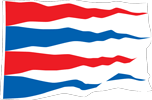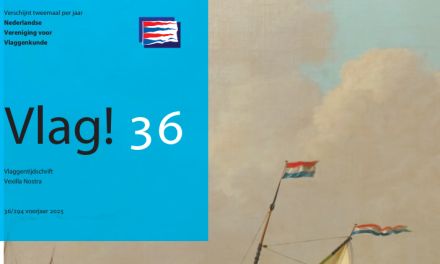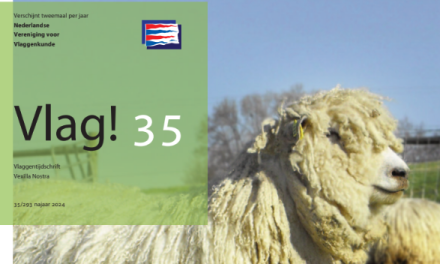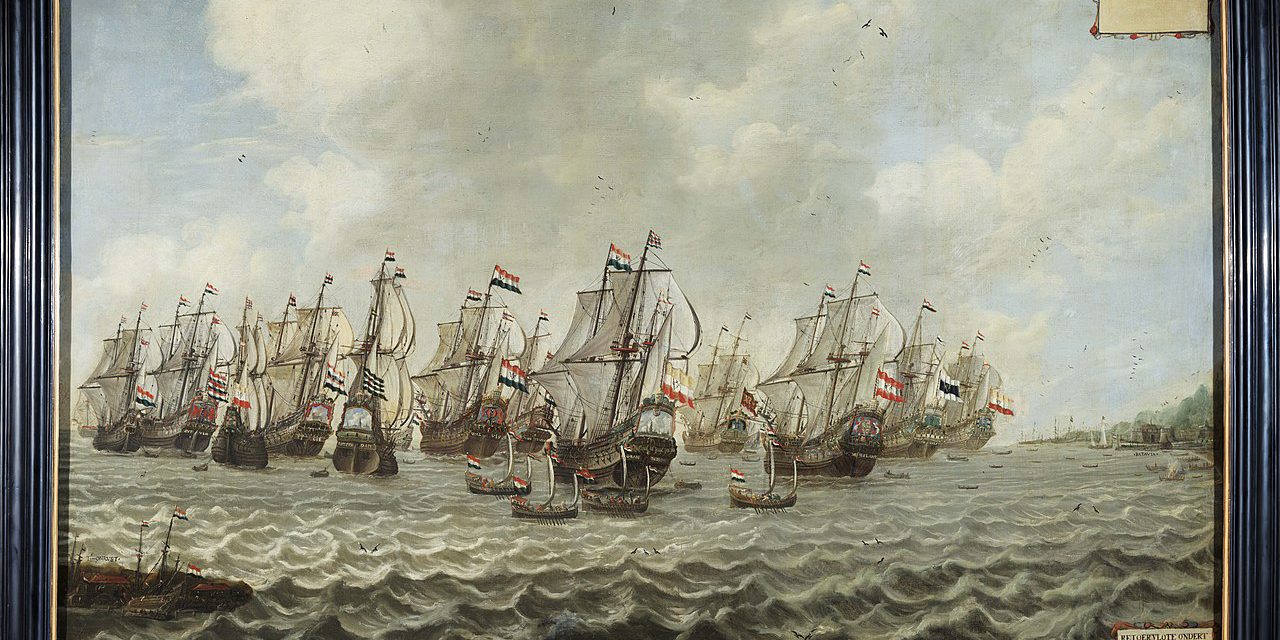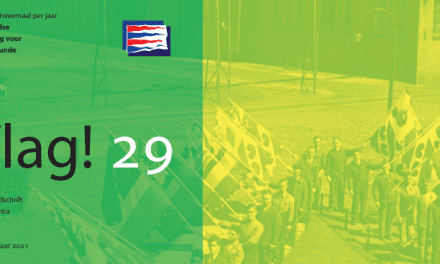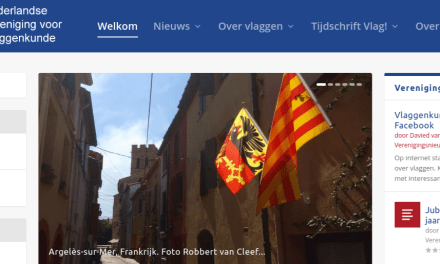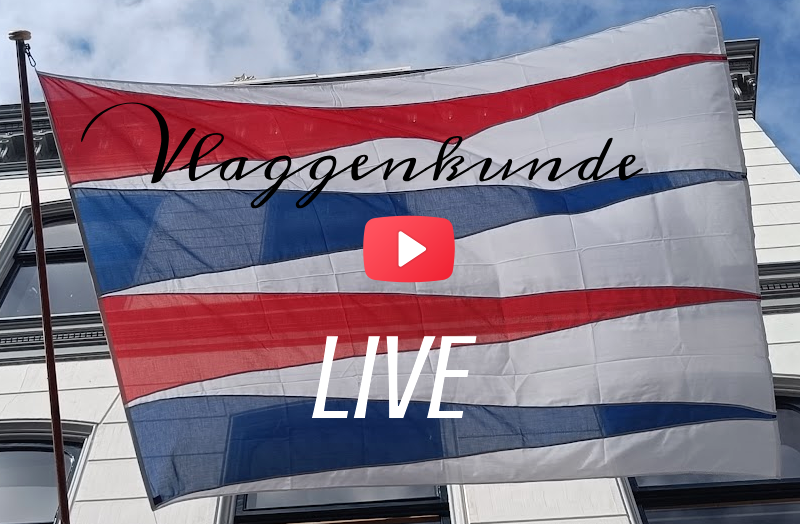The spring issue of the Dutch vexillological magazine Vlag! is now available online. The magazine is published in Dutch but an English summary can be viewed below.
If you want to receive our magazine as soon as it comes out, please register as a member. You will get Vlag! 26 in your mailbox at the beginning of April.
Articles in Vlag! 25
Flag News
Saint Helena changed the shield in its flag. The national bird, the Saint Helena plover, now looks more like the real bird. Martinique has adopted a flag that will represent the island at international events. In Mali, the Tuareg people designed a flag for their desired independent state Azawad. In Belgium the use of the flag with a crown for boating has been confirmed. The National League for Democracy in Myanmar wants to adopt another flag for the country. In Ethiopia, the formation of a federal state for the Sidama people has been abandoned. At protest demonstrations a flag was used. India has withdrawn the autonomy of the Islamic region of Jammu and Kashmir. Therefore, the use of the flag of that area is no longer allowed. In South Africa, a court of Justice has determined that the use of the old flag is an act of hatred and racism.
Municipal flags
The municipality of Meierijstad has adopted a flag which contains elements of the flags of the old municipalities which were merged to form Meijerijstad. Bloemendaal has added an extra stripe to his flag, so that the number of stripes is once more in line with the number of population centres. Westerveld has adopted a flag consisting of bands in the colors of the municipal coat of arms. The newly formed municipality of Beekdaelen has adopted a flag which includes the lion of Limburg and the cross gringolee of the family Huyn van Amstenrade.
Pilotage, fires, barrels and beacons
A special flag of the Dutch pilotage for the cutter Argus, used from 1845 to 1850.
When a normal Dutch flag is no longer enough.
Pleasure boats in the Netherlands are increasingly carrying the Dutch flag with a small provincial flag in the hoist of the red or white band. A photo report.
The municipality of Woerden expands its flag with ‘ Harmelen ‘ to a hotchpotch
After the municipality of Woerden was extended to include Kamerik and Zegveld, it adopted a new flag in 1989. In 2001, Harmelen was also added to Woerden. Only in 2017 the municipality adopted a new flag in which the lozenges of Harmelen were added to the old emblems of the three previous annexations.
Is there something wrong with the green stripe on the flag of Schiermonnikoog?
Officially, the green (middle) stripe of the flag of Schiermonnikoog is 1.5 times as high as the other stripes. In practice, however, it is of equal height. This is in accordance with an image from 1708.
Volga-Bulgars want to give the Chuvash republic another flag
In the eighth century, a group of Bulgarians established itself in the present-day Russian. Republic of Chuvashia: they are called the Volga-Bulgar people. Both the Chuvash people and the Volga-Bulgar people belong to the group of Turkic tribes. The Volga-Bulgarians have designed a flag that, like the official flag of Chuvashia, is based on the tree of life. Part of the Volga-Bulgarians mixed with the Tartars. They are known as the Volga-Tartars and use a flag based on the flag of the Republic of Tatarstan.
Ships of the Dutch East Indian Company (DEIC) returning to the Netherlands
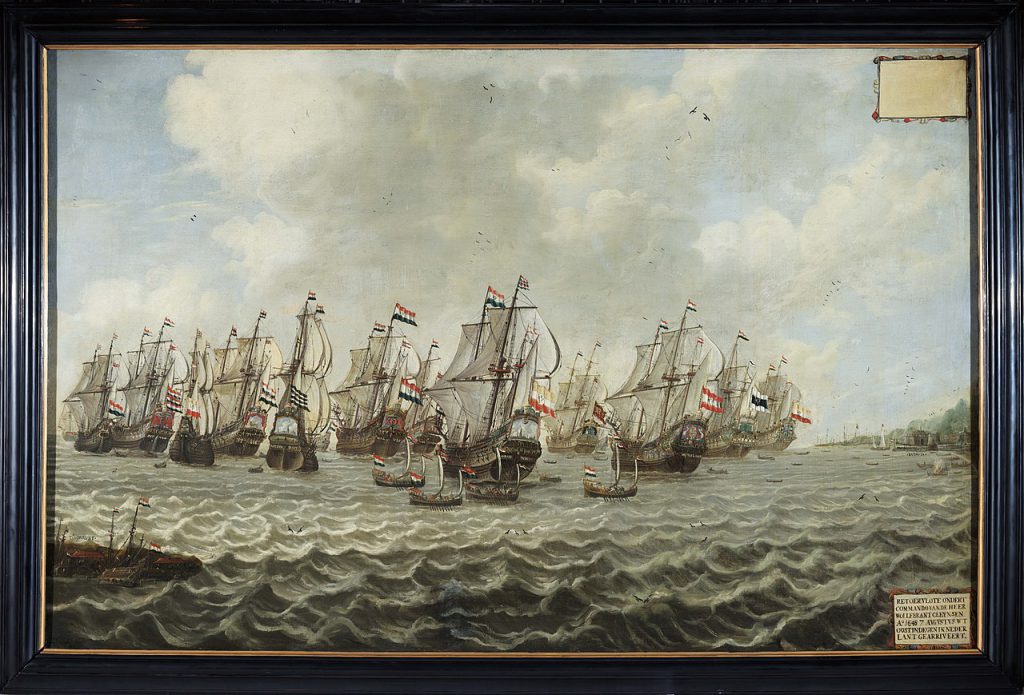
The painting “Return Fleet from Batavia” shows twelve heavily laden DEIC ships on their arrival in the Netherlands on August 8, 1648. The painting dates from 1650; the painter is unknown. The ships carry the DEIC flags of the various DEIC cities in the Republic of the Netherlands.
(Religious) flags in the free city of Christiania
In the middle of Copenhagen lies the free city of Christiania. This city originated in 1971 when members of the Hippie- and Provo movement settled there. Later it became a refuge for drugs users. Now many members of the philosophical Rastafarian movement live there. They use flags based on the ancient Ethiopian flag with the crowned Lion of Judah. Other flags with religious emblems have also been carried there.
At Versailles, Belgium wanted to stop German flag change
At the beginning of January 1919 the Republic of Germany was proclaimed in the defeated Empire of Germany. The old tricolor flag of black-white-red of the Empire would be replaced by a tricolor flag of black-red-gold, based on the flag of the students revolt in 1815. Several times the Belgian Government had protested against the intention of giving the German flag such a colour combination. However, the members of the Peace conference did not see any reason to respond to the request.
ICV 28 in San Antonio
Short report of the 28th International Congress of Vexillology in San Antonio, Texas. The ICV 29 will take place in the summer of 2021 in Ljubljana, Slovenia.
A first look at the origin of the word flag
In many Western European languages one uses the word flag, flagg, flagga, flagge or vlag. After studying different etymological dictionaries, the conclusion can be drawn that the word probably comes from English. In Dutch writings, the word “vlag” occurs for the first time in 1415.
Flags on Wikipedia should be correct
All Dutch municipality flags can be found on Wikipedia. However, details of the different shapes or emblems that appear on the flags can be lacking. The author suggest that members of the Dutch Association of Vexillology use their knowledge to improve flag representation at the internet address: https://nl.wikipedia.org/wiki/Wikipedia:Wikiproject/Heraldiek.
The documentation centre of the Dutch Association of Vexillology ( NVvV) can finally be used
The flag documentation of the NVvV is housed in the Dutch Genealogical Society (NGV) at Bunnik. Address NGV: Kosterijland 3, 3981 AJ Bunnik; Opening hours: Wednesday by appointment, Thursday and 2nd Saturday from 10:00 to 16:00 hours.
